An evolution from humans to birds—a portrait of the artist
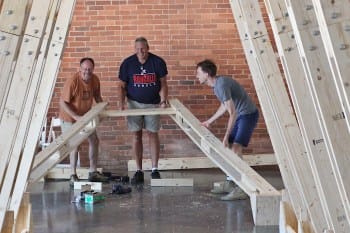
On Wednesday morning, the cavernous, brick-walled theater space at Bloomington’s FAR Center for Contemporary Arts stood empty except for a stack of lumber, each piece a pre-cut and bolted-together wooden sandwich of sorts.

Artist Nicholas Paul DeBruyne set about reducing that stack by laying out the sandwiches pairwise end-to-end in a grid of joints that eventually took up most of the floor. Over the next few hours, these basic bones would get fastened together and tilted towards the ceiling to form the framing elements of a piece of art called “Archaeopteryx.”
The in-progress work will be presented on Friday (July 12) from 5 p.m. to 8 p.m. at FAR. A panel discussion among DeBruyne and the rest of the members of the creative team from Wevolution Labs is scheduled for 7 p.m. The project is still in a fundraising phase and the team has set up an Indiegogo campaign.
The name of the creative team, the name of the work itself, and the artist’s description of the work have a common theme—evolution. Archaeopteryx is the name for bird-like dinosaurs that were a transition between feathered, non-flying dinosaurs and modern birds.
The piece of art will feature a canopy mounted on ribs that will articulate like wings, onto which interactive graphics will be projected. The graphics will reflect in some way how the people sitting on the benches collaborate: “By drawing parallels between the primal nature of evolution and the current human condition, we believe it has a powerful message that empowers others to evolve towards a better future; one that is more inclusive, equitable, and harmonious.”
This current project by DeBruyne offers a chance for Bloomington residents to observe another kind of evolution—of DeBruyne as an artist. He was the creator of “Facelift”—the nine colorful profiles of people, formerly mounted to the north facade of the 4th Street parking garage. DeBruyne created the piece a couple of years after graduating in 2008 from Bloomington North High School.
The parking garage has been declared structurally unsound and currently sits derelict, waiting for demolition, to be replaced with a new parking structure.

“Facelift” has been removed from the garage to protect the profiles from being piled into the rest of the demolition rubble. But they won’t be mounted on the newly-constructed replacement structure.
Sean Starowitz, Bloomington’s assistant director for the arts, is working on the public art components of the city’s planned two new parking garages—the other one will be in the trades district. Starowitz told The Beacon that “Facelift,” which was installed in 2010, had been decommissioned by the city. Removing a previously commissioned piece of public art is something the city does subject to the requirements of the federal Visual Artists Rights Act of 1990 (VARA), Starowitz said.
DeBruyne told The Beacon that Starowitz had contacted him about the pending demolition of the parking garage. DeBruyne told Starowitz his one request about the profiles from “Facelift” was that they don’t wind up in a landfill. So Starowitz said he’s trying to find a way to recycle the pieces, which were fabricated from recycled plastic that had been pressed into boards.
Starowitz said the piece’s site-specific design is a factor to consider when thinking about whether to try to find a different home for the work. The people’s profiles in “Facelift” looked northward, towards the John Waldron Arts Center, and that was intentional.
In 2009, the year before the DeBruyne’s piece was commissioned, the John Waldron Arts Center was experiencing some financial distress that caused an increase in fees. DeBruyne told The Beacon that “the concept behind that project was that these were members of the community watching over the John Waldron Arts Center…”
According to DeBruyne’s portfolio, the profiles were based on “actual community members.” DeBruyne told The Beacon this week that they included then-mayor Mark Kruzan and the city’s assistant director of the arts at the time, Miah Michaelsen. Rounding out the other seven were “some vendors from the farmers market, and Mom, Dad and siblings.”
The theme of a collaborative group activity—to watch over a struggling art institution, or to generate the interactive graphics of a kinetic sculpture—is common to “Facelift” and to “Archaeopteryx.”
Starowitz said the work had lasted a remarkably long time, given the construction materials and the budget he had to work with. DeBruyne’s portfolio pegged the commission for “Facelift” at $10,000.
The roughly $30,000 cost for the “Archaeopteryx” piece is not government-funded. The piece does have some partial funding from the Burning Man Foundation, and from Bloomington it is headed to Black Rock City, the temporary town in Nevada that appears one week a year on the occasion of Burning Man. This year Burning Man runs from Aug. 25 to Sept. 2.
For next month’s gathering, the Burning Man Foundation granted partial funding for more than 70 art installations. On the Burning Man website, the projects are listed alphabetically, which puts “Archaeopteryx” at the top of the list. To get an idea of the scale of Burning Man’s support of art, according to its federal non-profit filings for 2017, about $1.2 million in grants were made for art installations that year.
But Burning Man isn’t covering the whole cost of “Archaeopteryx.” That’s why the team launched an Indiegogo campaign.
On Thursday afternoon, DeBruyne said the partial assembly of “Archaeopteryx” was on schedule for the Friday evening unveiling.
Here’s some shots from the “Archaeopteryx” build.
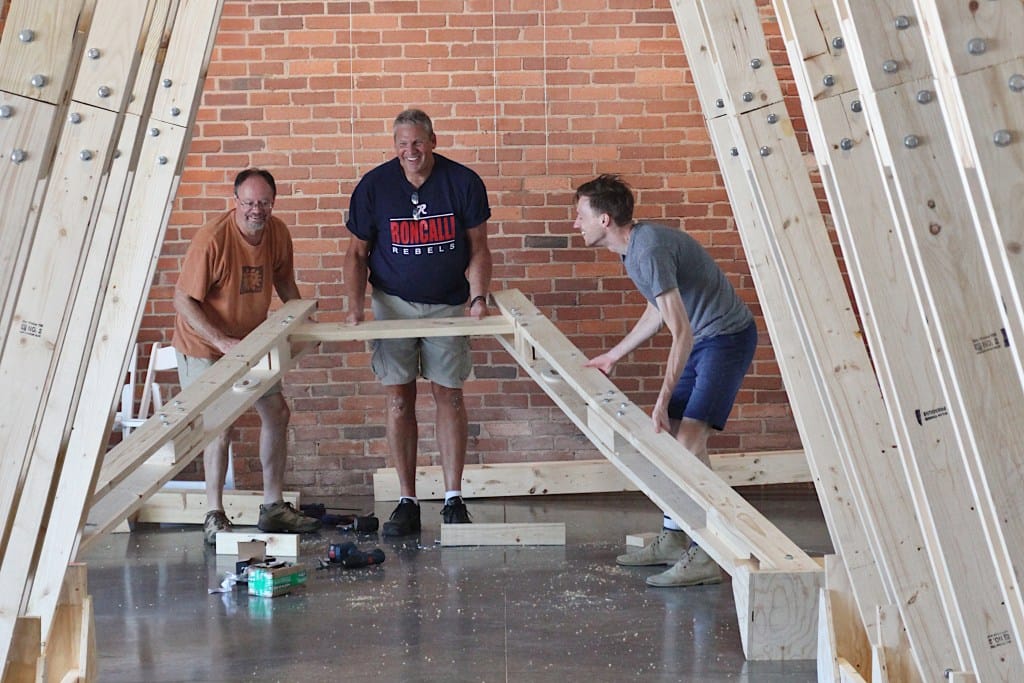
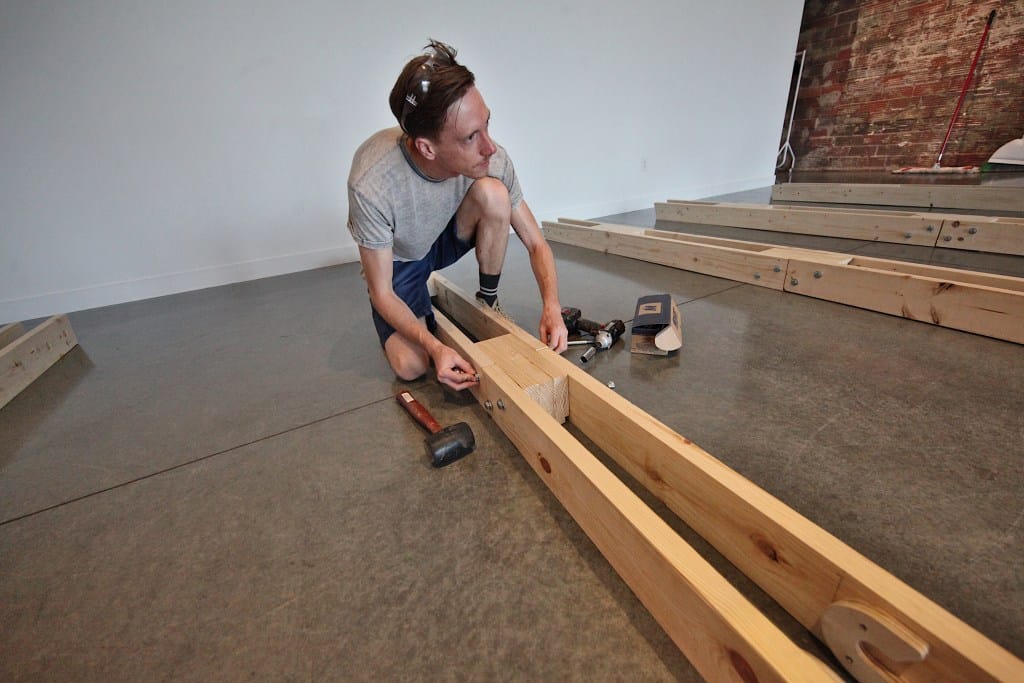
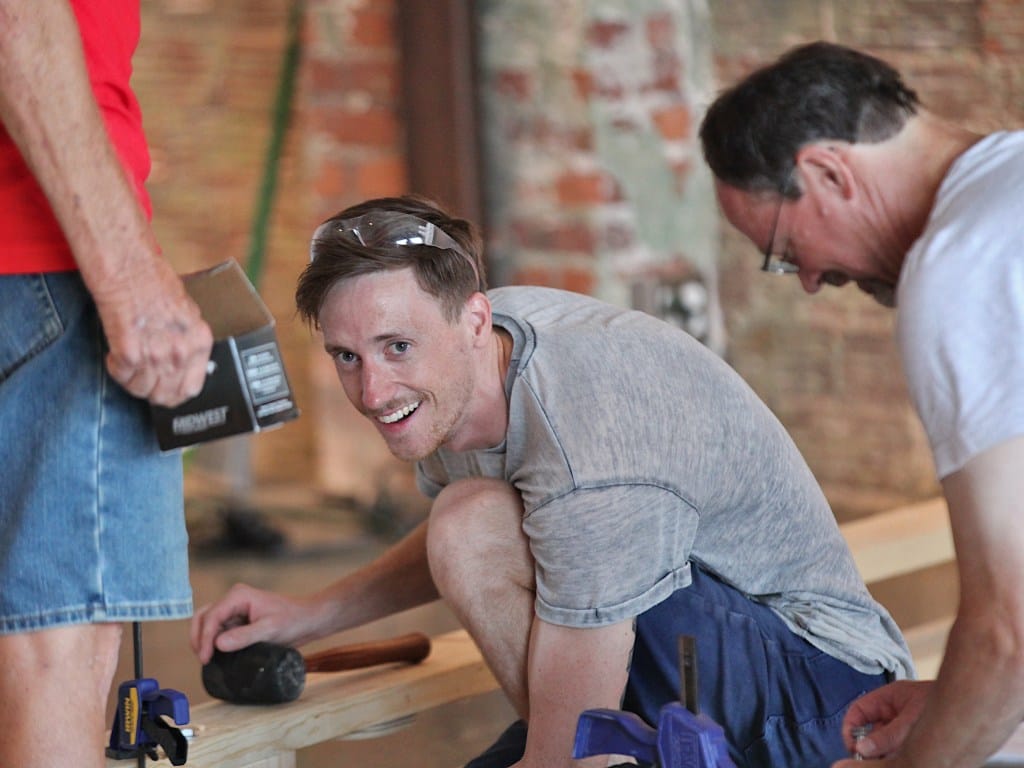
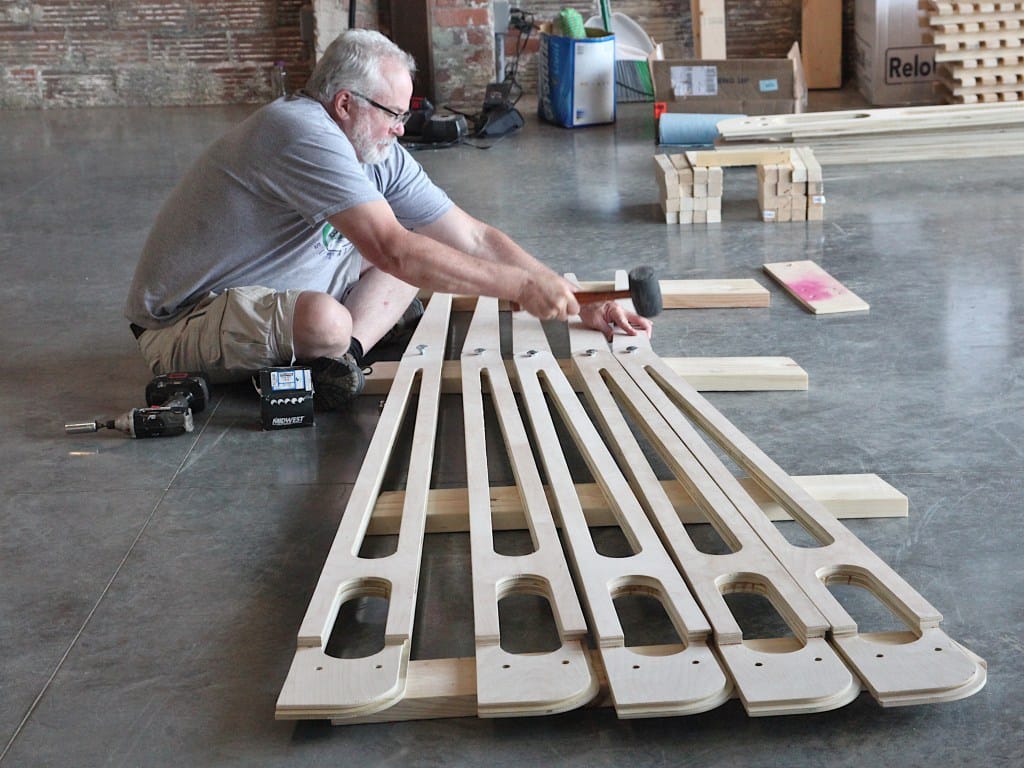
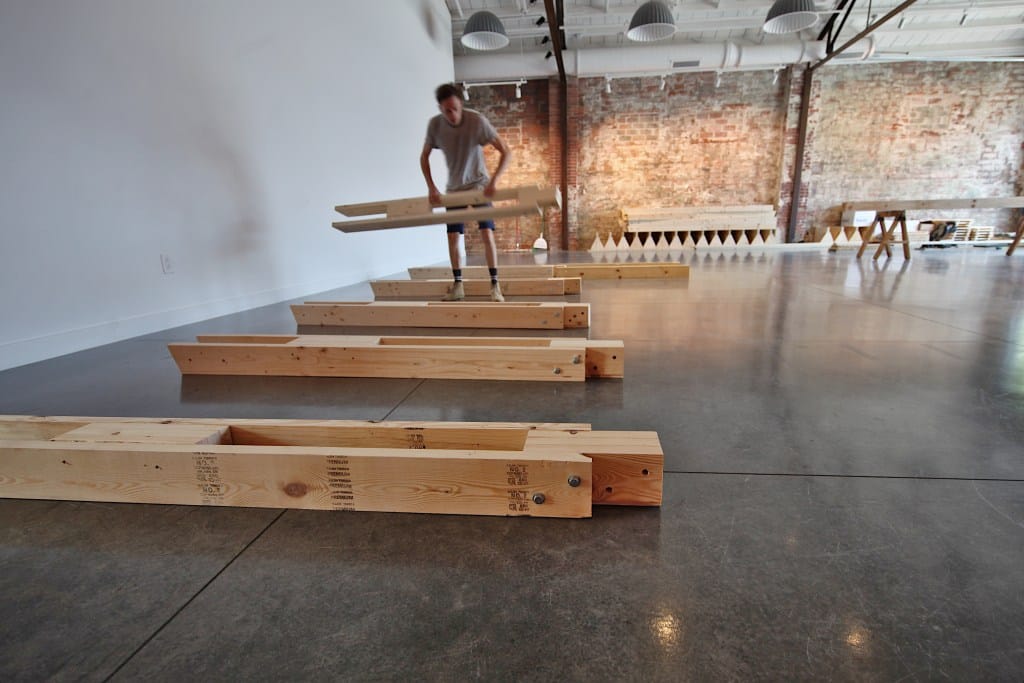
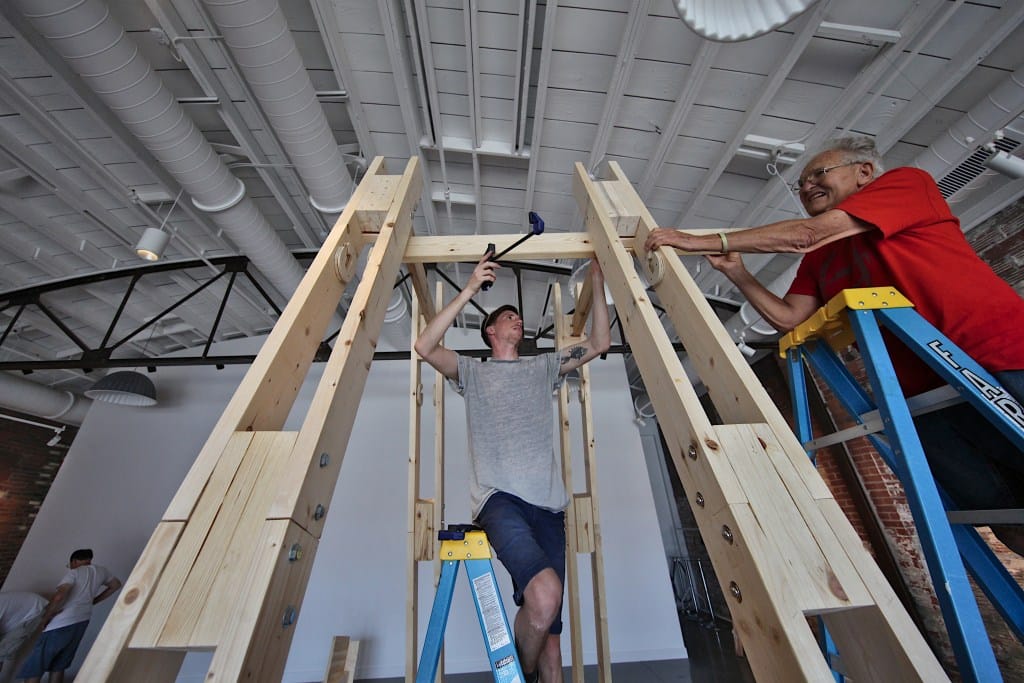
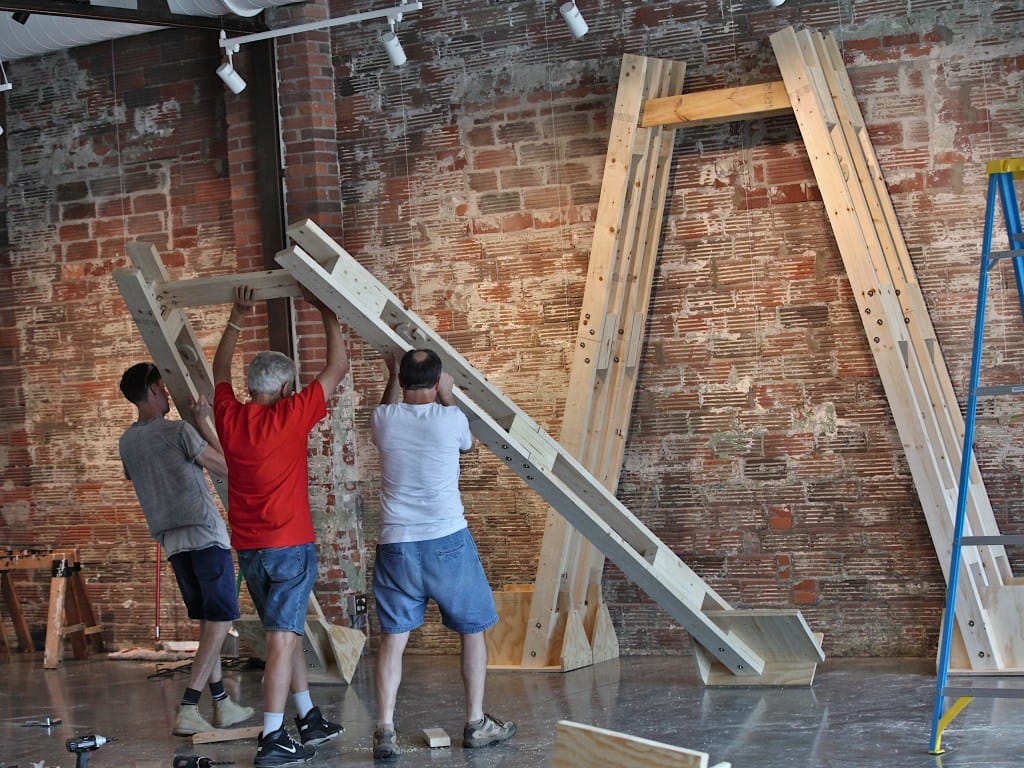
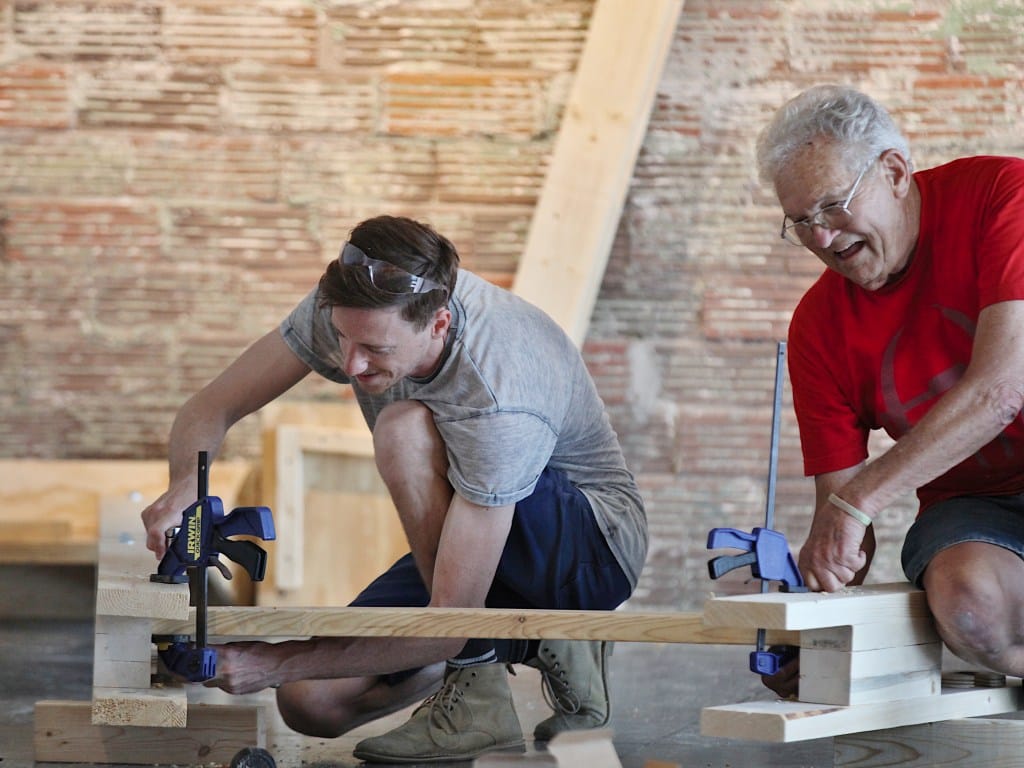
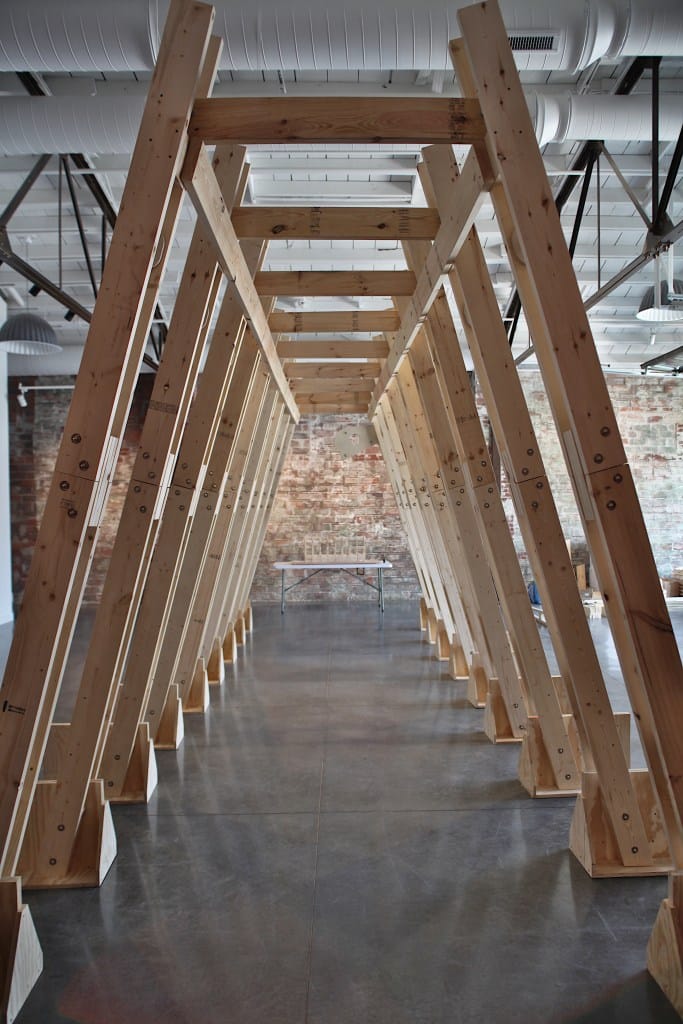




Comments ()